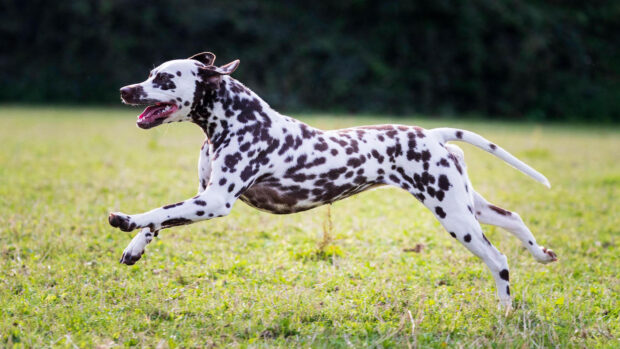As readers of Horse & Hound know, the Jack Russell Terrier is the perfect yard dog. They keep the rat population under control, they fit neatly in the lorry cab, and take up very little space curled up on a saddle cloth in the tack room. These types of terriers have been around since the 19th century, so it may come as a surprise to learn that the Jack Russell was only registered officially as a breed by the UK Kennel Club as recently as 2016, having previously been considered something of a mongrel.
However, they have their roots in traditional British terrier breeds, which was developed into a formalised heritage in Australia in the 1970s, where Brits who emigrated with a similar type of working terrier established a breed standard. So, while the breed is said to have been refined in Australia to the Jack Russell we now know and love, this diminutive breed has its origins in this country. So it’s pretty appropriate that our King and Queen are fans of the breed, having rescued Jack Russells Bluebell and Beth in 2017.
The Jack Russell is essentially a modern descendant of the hardy terriers developed by the Rev John Russell, who developed the Parson Jack Russell to go to ground to bolt the fox or badger (without attacking them). However, there’s a certain amount of vagueness around the whole Russell Terrier family, whose breed standards vary from country to country. The original Parson Jack Russell dropped the Jack part, giving rise to two similar but distinct breeds, the Parson Russell Terrier and the slightly smaller Jack Russell. There is also the related Russell Terrier, also with similar attributes both physically and mentally.

Jack Russell Terrier: fact file
Kennel Club breed group: terrier
Size: small
Daily exercise: at least an hour a day
Coat: can be smooth, broken or rough; shedding
Colours: white is traditional, with black, tan or black/tan markings. However, because the breed has not been regulated for many years, black/tan (with no white markings) has become increasingly popular. Eyes are dark, almond-shaped and fairly small.
Lifespan: more than 10 years
Bark: definitely. They are known for being loud mouths, especially when they are excited (which is often). This is a spirited breed that likes to use its voice, whether its located prey, spotted a stranger or is simply keen to tell you they want to go for a walk.
Distinctive features: a lithe, sturdy and active little terrier, with smart movement and a keen expression.
Temperament: bold, fearless, friendly and confident
Things to consider: they bark a lot. To stop them yapping unnecessarily, check out these tips on how to stop a dog nuisance barking.
Like many terriers, they are designed to go to ground, so be aware they may develop a habit for digging, which you might want to nip in the bud (here’s how to stop a dog digging). Watch out, as they’re fast too – developed to keep up with horses on a hunt before the fox went to ground. They made our list of the fastest dog breeds as for a little dog, they’ve got some pace.
Thanks to their diminutive stature, they’ll enjoy one of the best dog beds for small dogs.
And beware, this is a dog that thinks it’s a human, one of the kids. So expect them to hop up on to the sofa or your lap, watch TV, and get at least as much attention as the humans in the fold.
Training: this is a dog that is prone to “small dog syndrome” – a big dog in a little package. They are competitive, and thrive on athletic pursuits such as chasing balls, mini agility and most definitely ratting. You won’t need to train them to do the latter, that is an innate instinct.
Training-wise, they don’t have a long attention span, so keep the sessions short and great fun, using the best training treats for motivation.

Complete Guide to Jack Russell Terriers
Using interviews with 13 top Jack Russell breeders, this book takes an in-depth look at what it takes to successfully live with, raise, and train a Jack Russell Terrier.

All about the Parson Russell Terrier

All about the Bedlington Terrier

100 girls’ dog names for bitches

10 of the most expensive dog breeds in the world – how does your pooch measure up?

Faster than a cheetah? Check out the pace of these 7 speedy dog breeds

Subscribe to Horse & Hound magazine today – and enjoy unlimited website access all year round
Horse & Hound magazine, out every Thursday, is packed with all the latest news and reports, as well as interviews, specials, nostalgia, vet and training advice. Find how you can enjoy the magazine delivered to your door every week, plus options to upgrade your subscription to access our online service that brings you breaking news and reports as well as other benefits.





